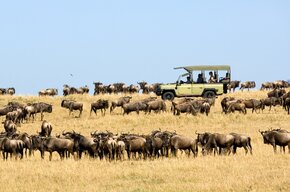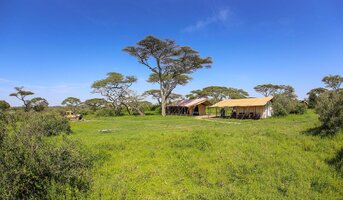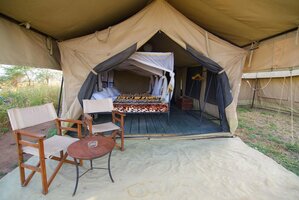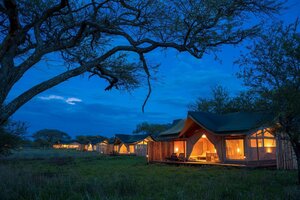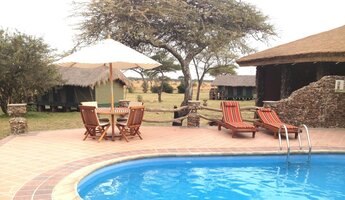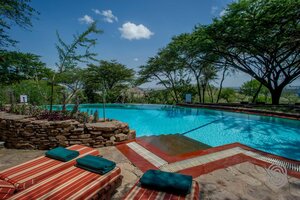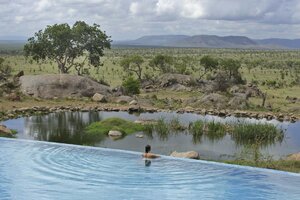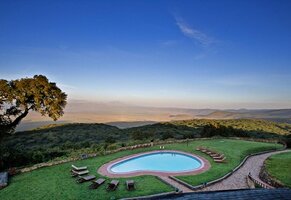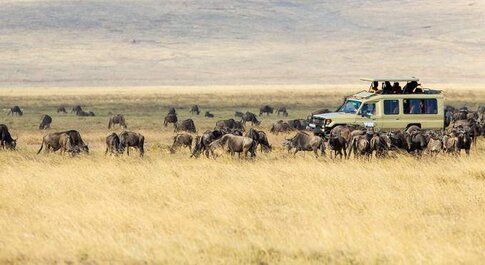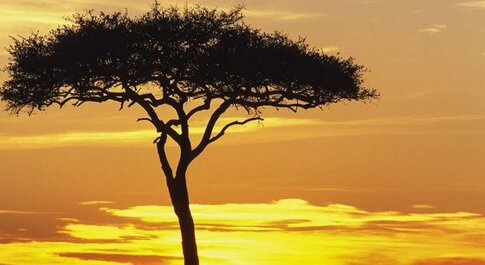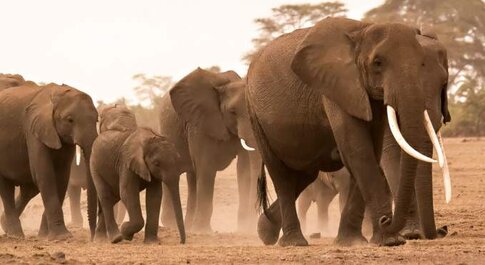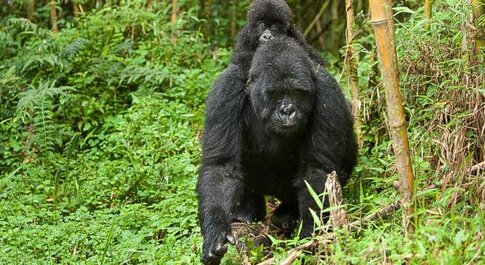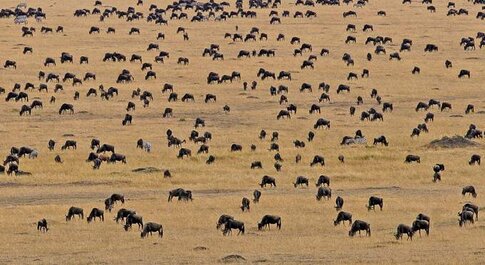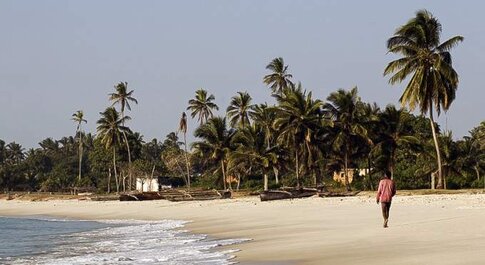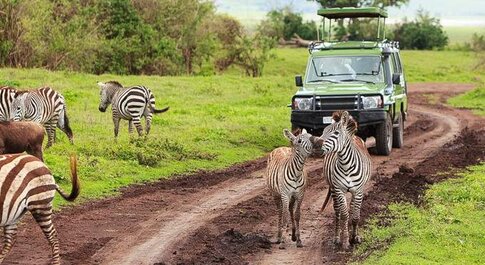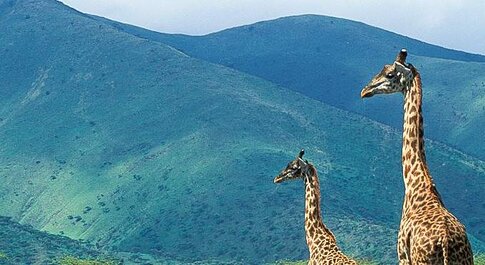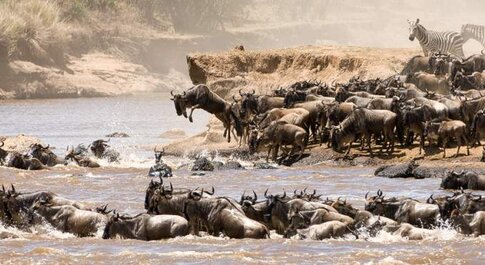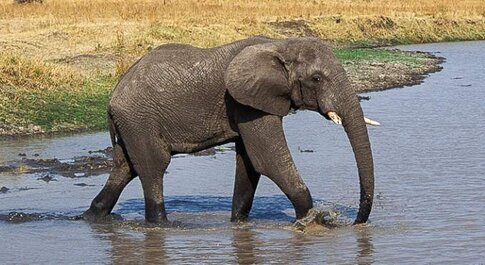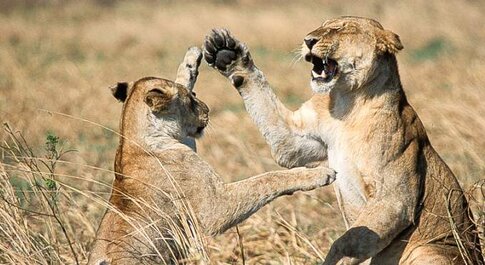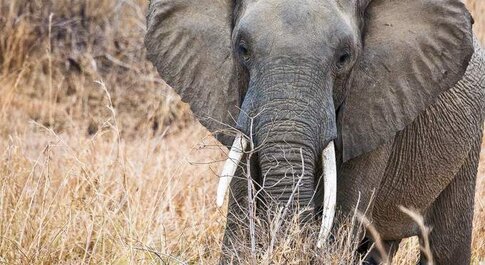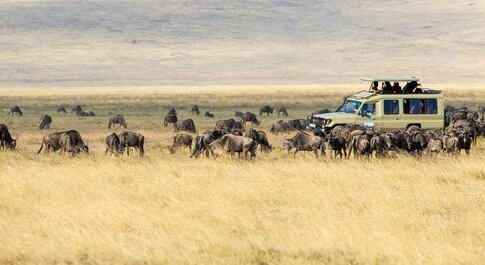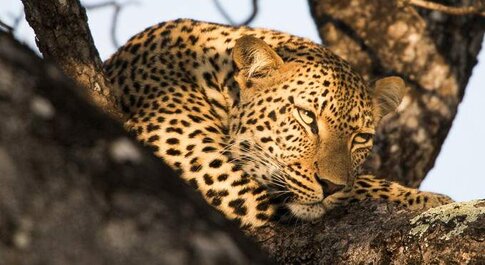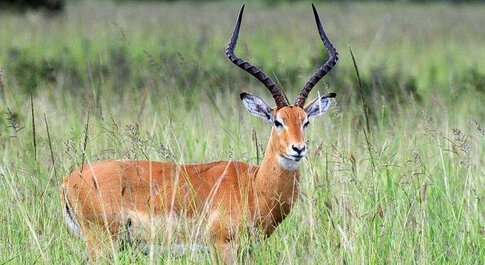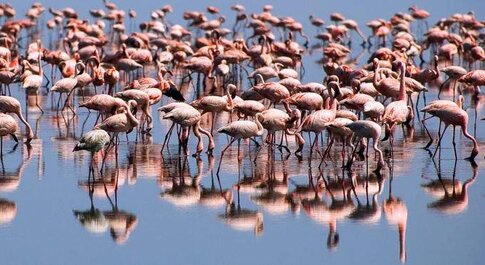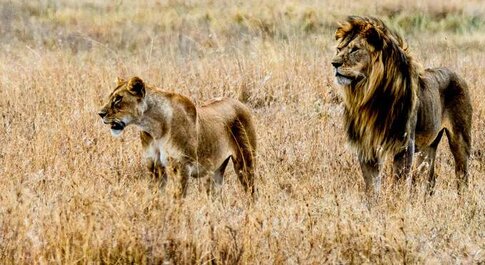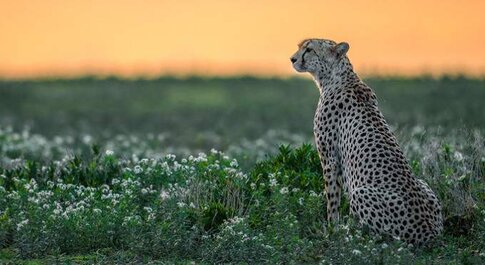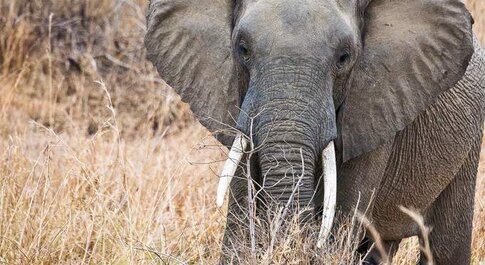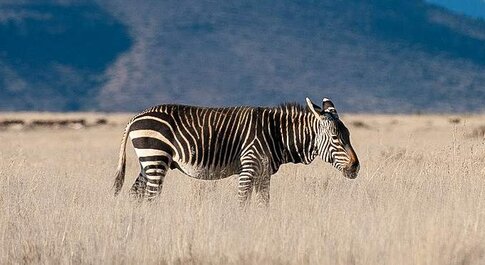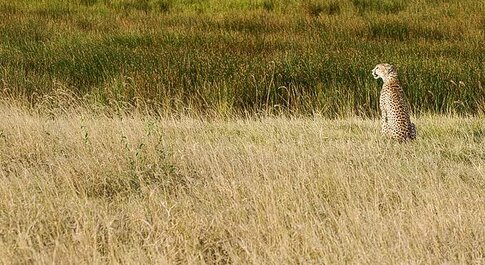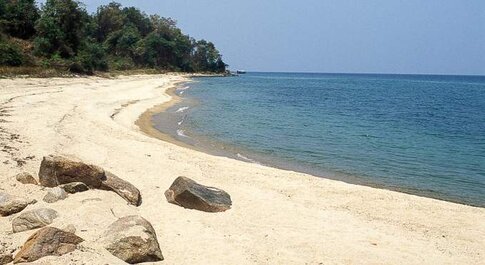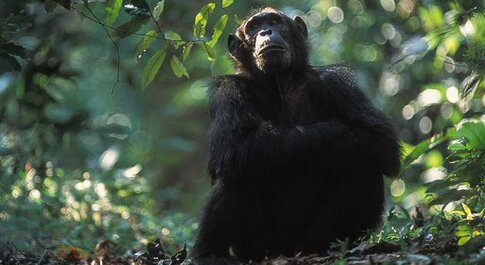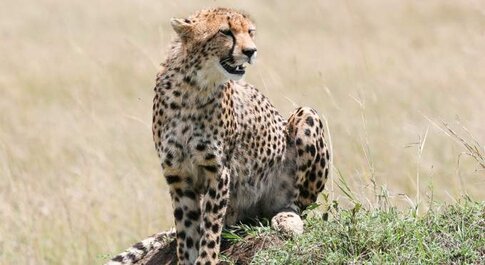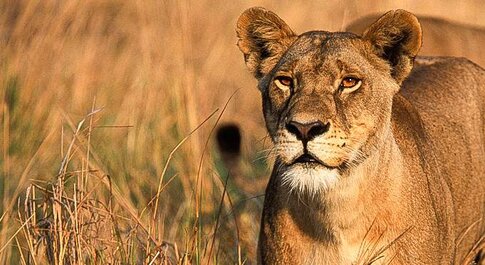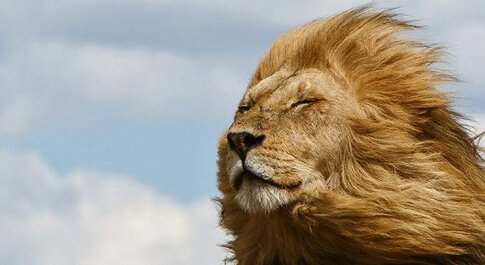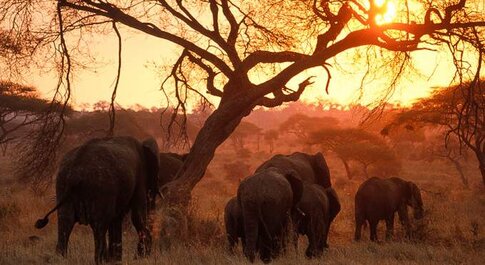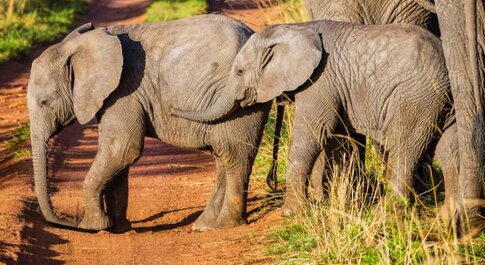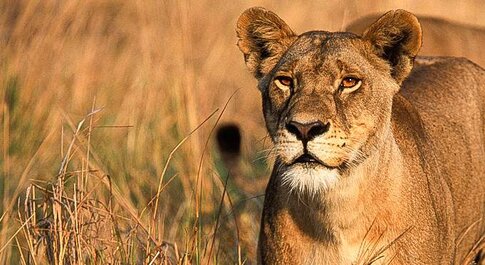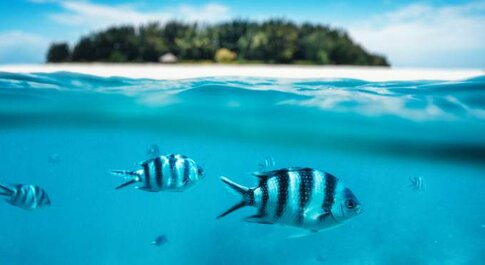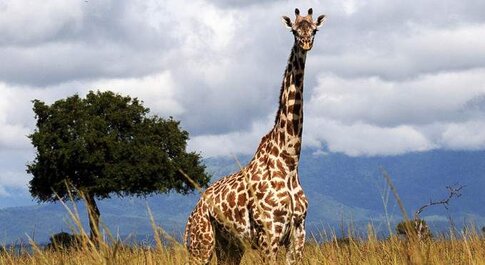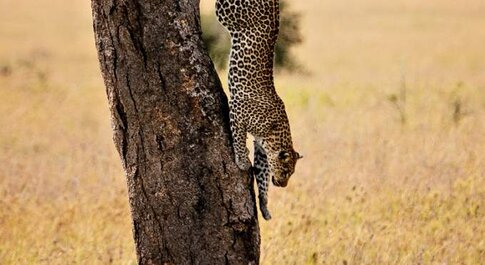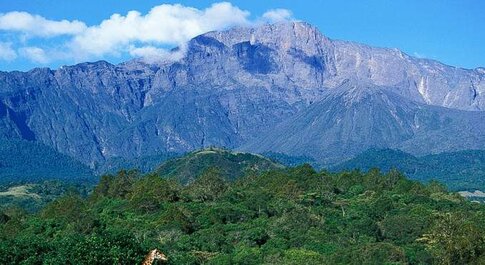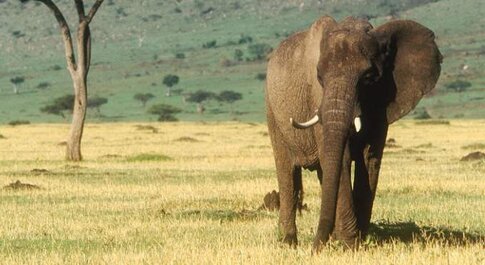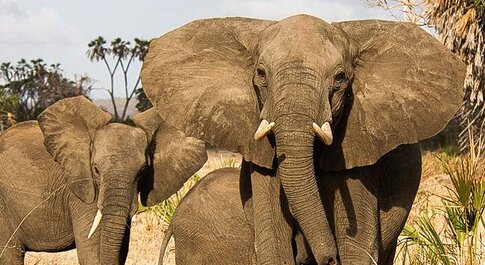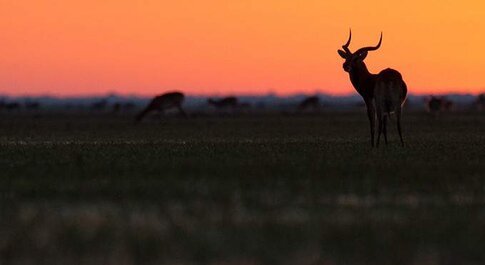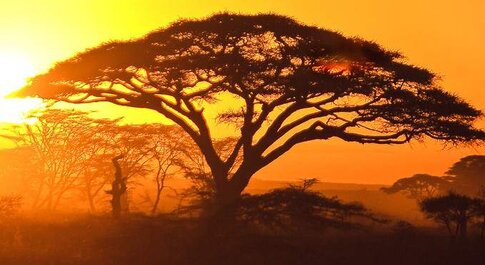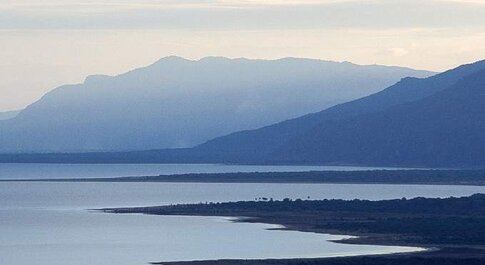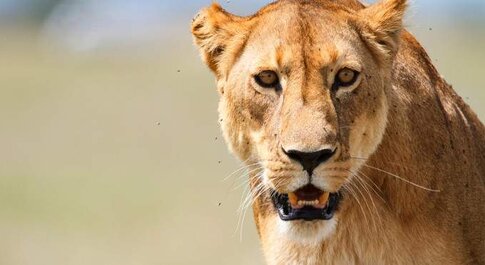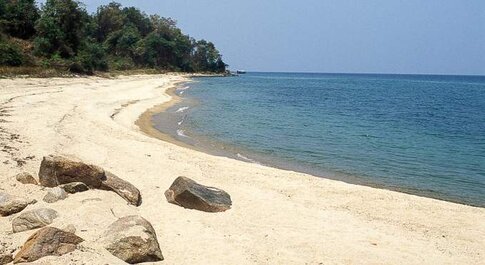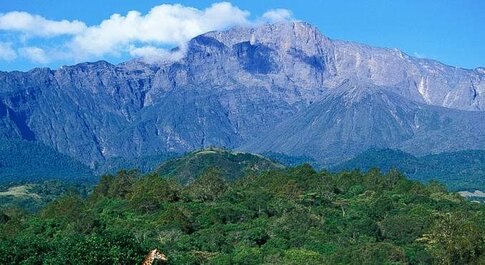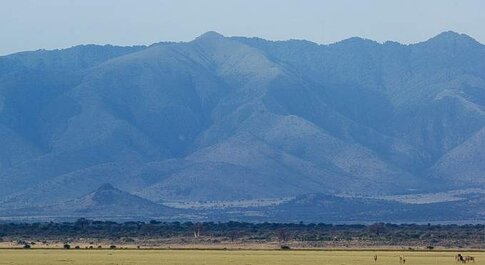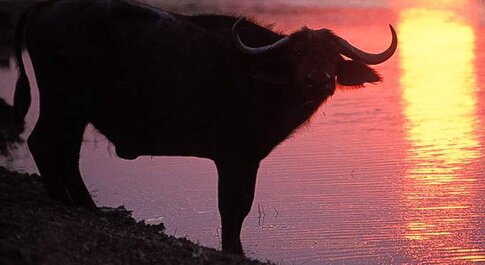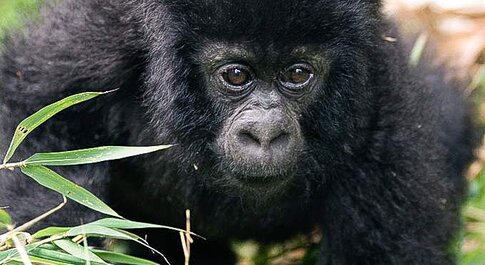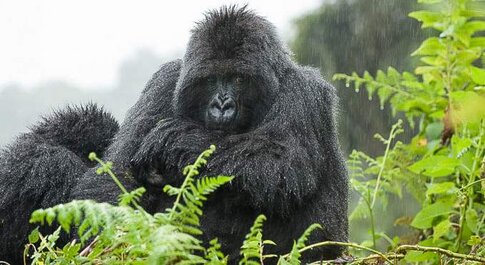Overview
Wildlife
Wildebeest Migration - Every year, over 2 million wildebeest, zebra and gazelle migrate from the Serengeti to the Masai Mara Reserve in Kenya. If you're there at the right time, you can spot herds of wildebeest and zebra stretching to the horizon. The Serengeti offers some of the best wildlife viewing in Africa. All the major safari animals occur in great numbers. Cheetah and four of the Big 5 are easily seen, but rhino sightings are rare, and only black rhino are present. Aside from the big cats, many other predators can be spotted including spotted hyena (especially in the morning), jackal and bat-eared fox. More About the Wildlife
Scenery
Serengeti’s scenery is renowned for its grassland plains in the southeast. The northern part is more hilly and rocky. To the west, valleys, rivers and forest can be found. Several areas in the Serengeti are dotted with ‘koppies’, granite outcrops rising up from the plains. It’s an immense landscape and quite stunning – big sky country that feels like untamed wilderness.
Best Time to Visit
Overall, wildlife watchers are better off timing their trip to coincide with the drier months (June to October). Aim for June and July if you can, as the incredible wildebeest migration usually tramples the plains at this time. If you’re keen on seeing predators in action, visit in late January or February. This is the hiatus in the annual rains, when the wildebeests calve. More About the Best Time to Visit
Weather & Climate
Conditions in the Serengeti are rarely taxing in the daytime during the Dry season (June to October), when the temperature stays nice and warm. It’s a different story at night, when the mercury can take a deep dive. The heat creeps up a few degrees during the Wet season (November to May), though the odd cold front can introduce a chill. More About the Weather and Climate
Reviews
Feedback Company
Tripadvisor
Wildlife & Animals
-

Lion
Common -

Wild Dog
Rare -

Buffalo
Common -

Cheetah
Common -

Giraffe
Common -

Elephant
Common -

Hippo
Common -

Hyena
Common -

Leopard
Occasional -

Wildebeest
Abundant -

White Rhino
None -

Black Rhino
Rare -

Zebra
Abundant
Wildlife highlights
Best time for wildlife viewing
Best Time to Visit
The best time to visit the Serengeti National Park is in the Dry season (from late June to October). This period offers the best wildlife viewing in general – with the wildebeest migration as its absolute highlight. Wildlife viewing is good throughout the year, but certain areas are better at specific times. The timing of the migration varies every year (the best chance of seeing it is during June and July) while the wildebeest calving is from late January to February.
June - October
Dry Season
- June and July are the best months to see the wildebeest migration in the western corridor and August to September in the north of the park
- Animals are easier to spot since they concentrate around waterholes and rivers and the vegetation is less thick
- Mostly sunny and there is very little rain
- Few mosquitoes and the chance of contracting malaria is minimal
November - May
Wet Season
- Late January to February is the time to see the calving – this is an excellent time to see predator action
- The scenery is lush
- April and May are low season, so it's usually less crowded and rates might be lower
- Although wildlife is easier to spot in the Dry season, the Serengeti offers good wildlife viewing throughout the year
- Migratory birds are present and bird-watching is at its best
- Except for March, April and May, rains are mostly short afternoon storms and seldom interfere with your trip
Weather & Climate
The climate in Serengeti is usually moderate and pleasant. It never gets very hot, but it is consistently cool to cold at night and in the early mornings. Don’t forget to take warm clothing. Serengeti's Dry season is from June to October. There are two Wet seasons. The ‘short rains’ are from November to December, and the ‘long rains’ are from March to May. During the Wet season, it rarely rains all day, but afternoon thundershowers can be expected.
Climate Chart
- – 1,140-2,099m / 3,740-6,886ftDry season
- June to OctoberAfternoon temperatures are usually around 25°C/77°F. Most days have a fine, clear sky. It gets cold at night with minimum temperatures around 14°C/57°F.
- June, July, August & September Occasional cold fronts are possible, with temperatures close to freezing. It’s usually cold early in the morning.
- October The short rains might start at the end of October if they are early.
Wet season
- November to MayAs in the Dry season, temperatures are moderate during the Wet season. Afternoon temperatures are usually around 26°C/79°F, and night temperatures are around 15°C/59°F.
- November & December 'Short rains' – An unpredictable period of about a month of rains occurs sometime between October and December. The rains will be unlikely to interfere with your safari.
- January & February There tends to be a dry spell between the short and long rains. The exact timing is unpredictable.
Getting There
Most safaris to the Serengeti start from the town of Arusha. The best option to get there is to fly into Kilimanjaro International Airport (JRO) which is situated about 46km/29mi from Arusha. It is also possible to fly into Julius Nyerere International Airport (DAR), just outside of Dar es Salaam, and fly on to Arusha Airport (ARK) or Kilimanjaro International Airport (JRO). There are regular flights from Arusha to several airstrips inside the park. It’s also possible to drive; the trip is about 325km/202mi and will take about eight hours. It is a bumpy ride but it’s scenic and you’ll see some wildlife on the way. As the trip takes you through the Ngorongoro Conservation area, a popular option is to fly one way, and drive the other way taking in an overnight stop to visit the Ngorongoro Crater. Coming from the crater, the distance to the Seronera area in the Serengeti is about 140km/90mi, and the driving time is about three hours.

 HELP ME PLAN
HELP ME PLAN



